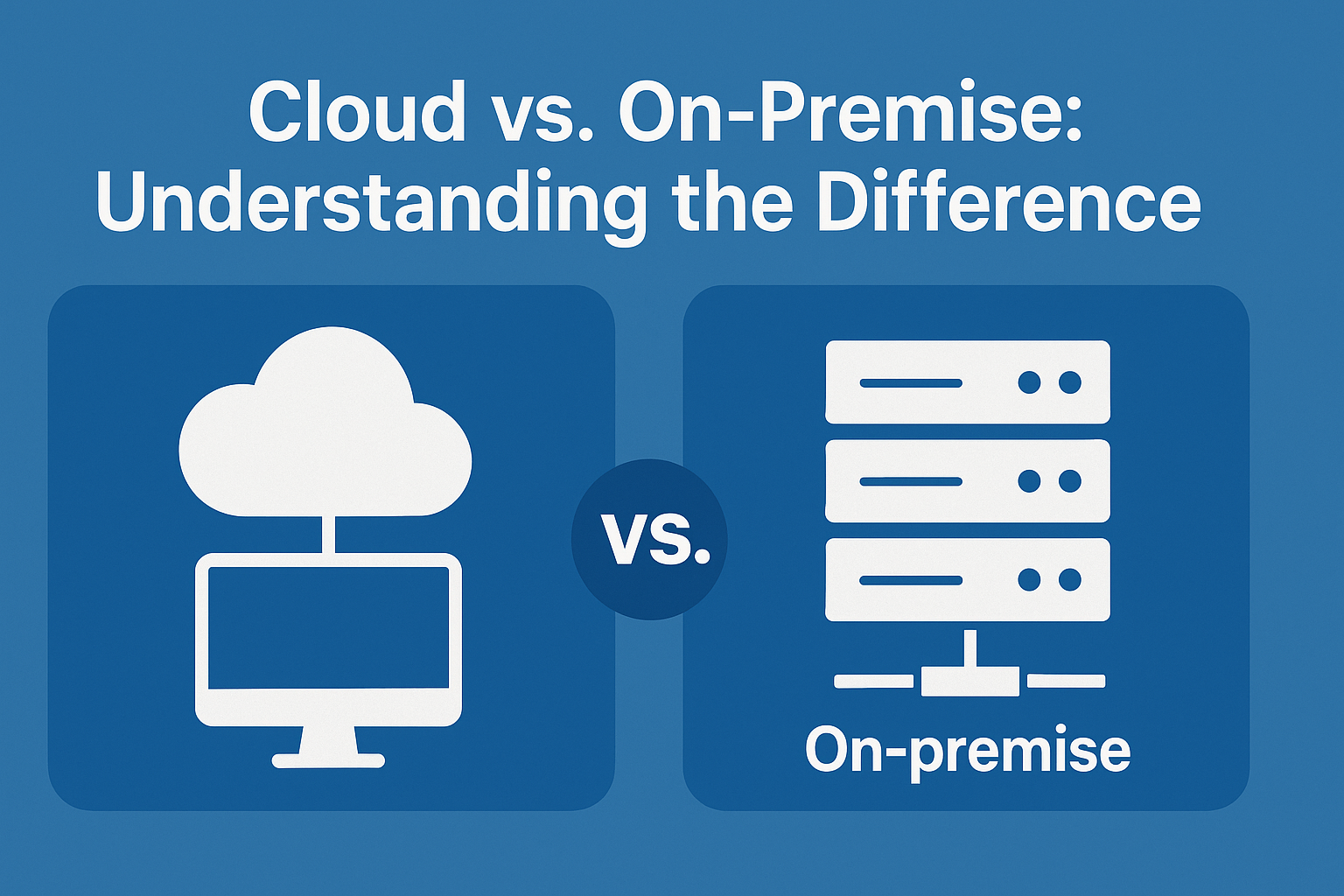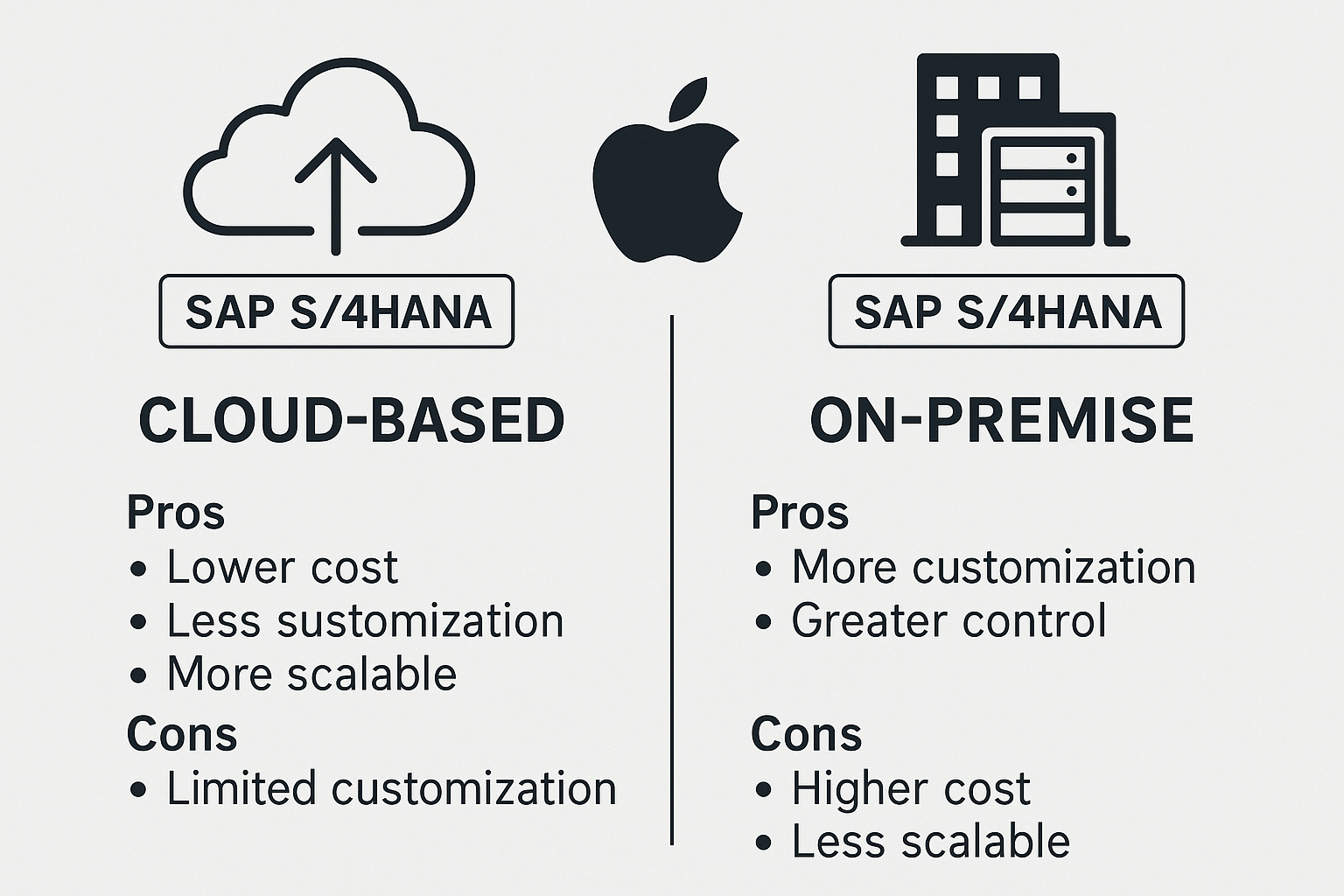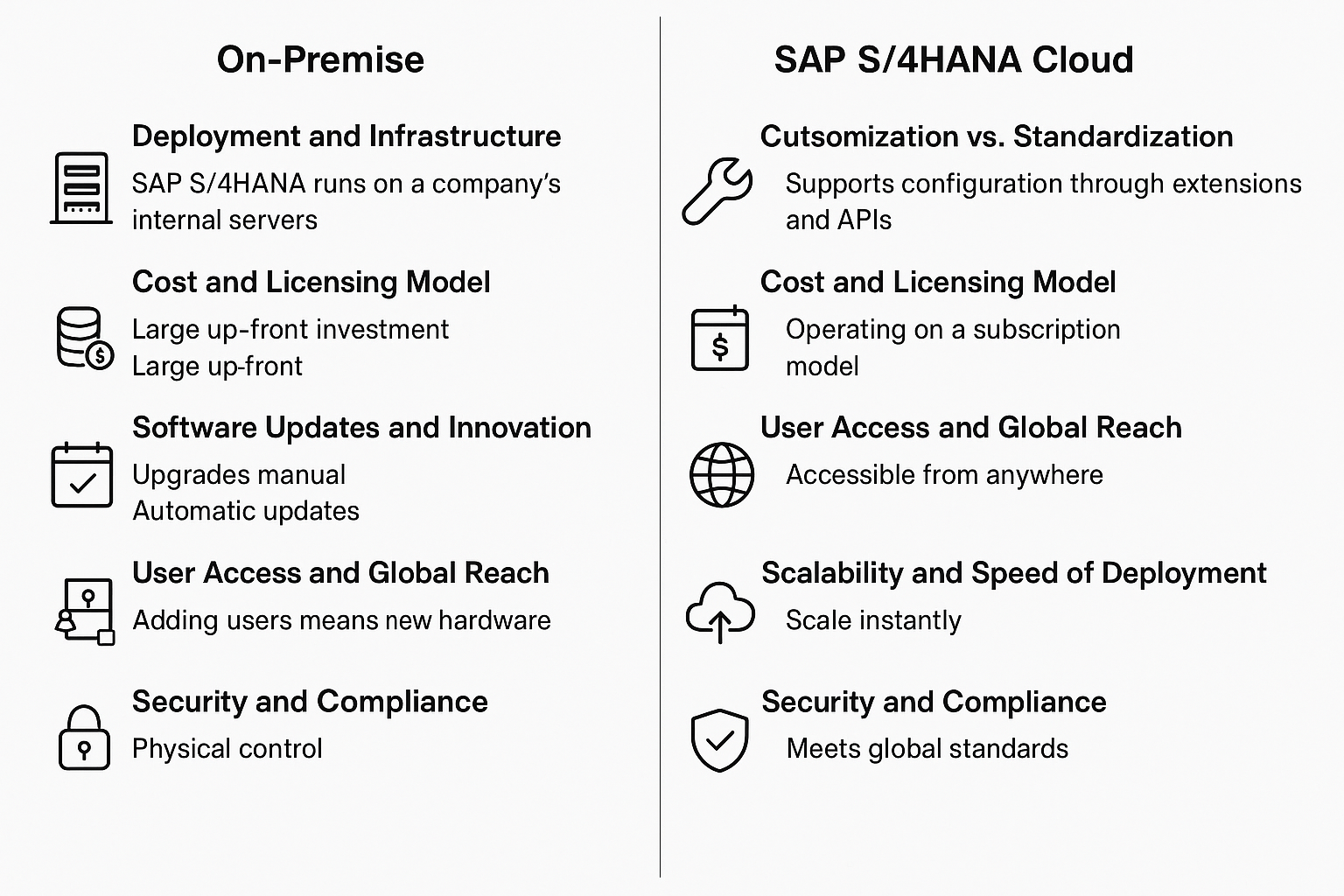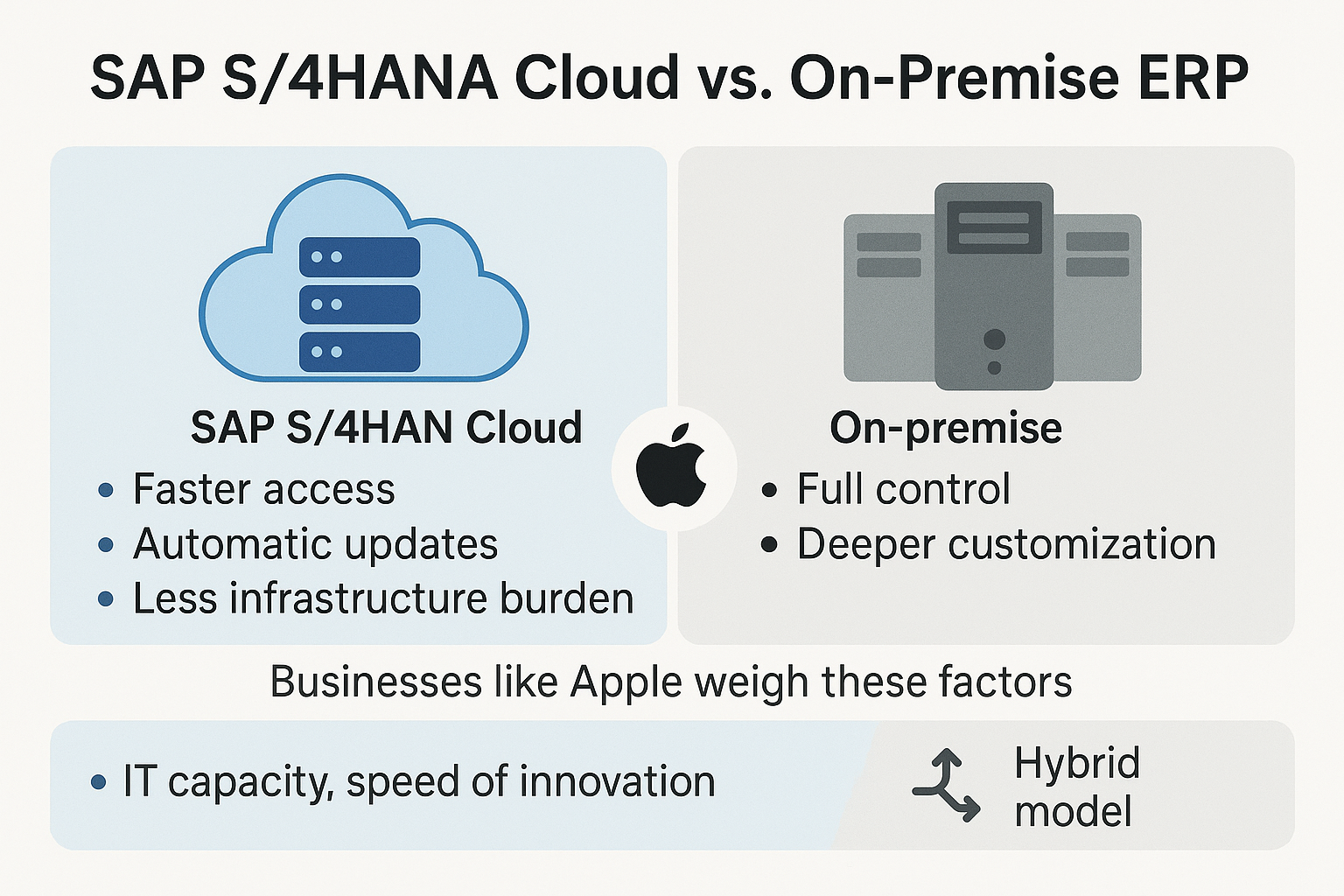Lesson Title: Cloud vs. On-Premise: Understanding the Difference

Lesson Description:
In this lesson, you’ll explore the differences between cloud-based and on-premise deployments of SAP S/4HANA. Using Apple as an example, you’ll understand the pros and cons of each model and how this choice impacts cost, control, customization, scalability, and business agility.

Lesson Learning Objectives:
-
Understand the core differences between SAP S/4HANA Cloud and on-premise deployment.
-
Identify how each model affects IT operations, costs, scalability, and access.
-
Recognize how companies like Apple evaluate deployment choices based on business needs.
Lesson Key Points:

✅ Deployment and Infrastructure:
In an on-premise setup, SAP S/4HANA is installed and maintained on a company’s own servers. Apple would own and manage all infrastructure, including data centers, servers, and networks. In the cloud model, SAP hosts the system on its own infrastructure, and Apple accesses it via the internet. This reduces setup time and eliminates the need for in-house hardware.
✅ Customization vs. Standardization:
On-premise deployment gives Apple full control to customize the system’s code and build highly tailored workflows. SAP S/4HANA Cloud, by contrast, emphasizes standard best practices. Apple can configure and extend functionality using built-in tools but cannot deeply modify the core system. This improves system stability and speeds up upgrades.
✅ Cost and Licensing:
On-premise ERP typically requires a large upfront capital investment—purchasing hardware, software licenses, and allocating IT staff. SAP S/4HANA Cloud uses a subscription model, spreading costs over time. Apple pays based on usage (e.g., number of users), making budgeting more predictable and scaling more flexible.
✅ Software Updates and Innovation:
With on-premise systems, upgrades are done manually and may be delayed for months or years. SAP S/4HANA Cloud delivers regular, automatic updates, often quarterly. This means Apple always runs the latest version and benefits immediately from new features, performance improvements, and compliance tools.
✅ Global Access and Mobility:
Cloud-based SAP S/4HANA allows Apple teams across the world to access the same system from any device with an internet connection. Whether in Cupertino, Tokyo, or an Apple Store in London, everyone works in real time. On-premise systems may require VPNs or specific network access, limiting mobility and increasing setup time for new locations.
✅ Scalability and Speed of Deployment:
Expanding an on-premise system requires purchasing and installing new hardware, which can be slow and costly. In the cloud, Apple can scale instantly by adjusting its subscription. New users or locations can be added quickly, making cloud ideal for rapid growth or global rollout.
✅ Security and Compliance:
On-premise deployments allow Apple to maintain direct control of data and security, which may be preferred for highly sensitive operations. However, SAP S/4HANA Cloud is hosted in certified, secure data centers and complies with global standards like GDPR and ISO. Apple can also choose specific data residency options to meet regulatory needs.
Practical Example:
If Apple experiences a surge in AirPods sales globally, a traditional on-premise ERP system might delay visibility into inventory and sales trends until overnight batch processing completes. With SAP S/4HANA Cloud, Apple sees demand in real time. Managers can adjust production and procurement quickly, and predictive analytics can alert them to potential component shortages—all without waiting for reports or system delays.
Lesson Summary:
In this lesson, you explored the differences between SAP S/4HANA Cloud and on-premise deployments. While on-premise systems provide full control and deep customization, they require greater IT effort and investment. SAP S/4HANA Cloud offers rapid deployment, real-time global access, simplified maintenance, and continuous innovation—all managed by SAP. For companies like Apple, the decision often depends on balancing the need for flexibility and control with speed, agility, and scalability.

Lesson Takeaways:
-
SAP S/4HANA Cloud simplifies deployment, reduces internal IT burden, and ensures access to the latest innovations.
-
On-premise systems offer deeper control and customization, but require more resources to manage and maintain.
-
The cloud model supports real-time global access, faster scaling, and lower upfront costs.
-
Businesses like Apple must weigh control, speed, customization, and compliance when choosing a deployment model.
-
Many large enterprises adopt a hybrid approach—leveraging cloud where standardization works and on-premise where deeper customization is needed.
